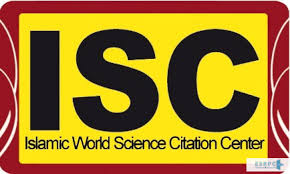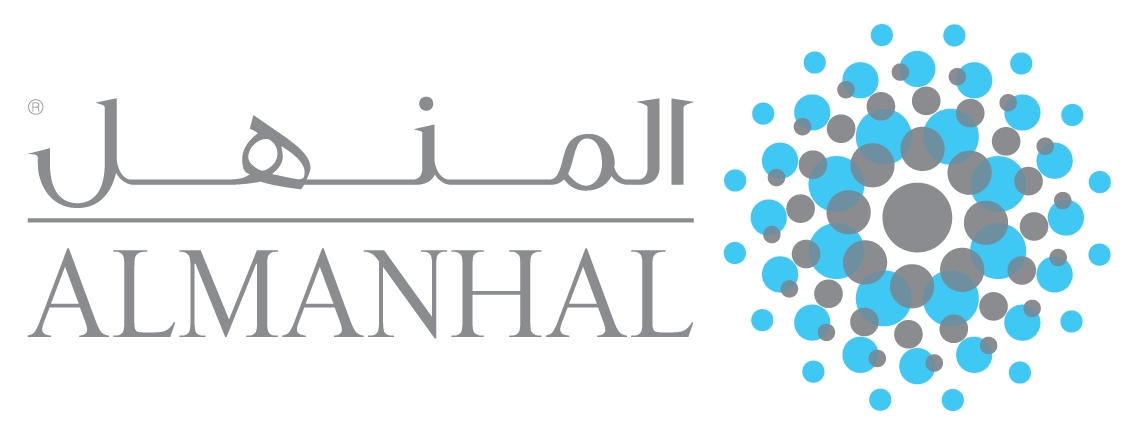Priority of Waqf Development among Malaysian Cash Waqf Donors: An AHP Approach
DOI:
https://doi.org/10.31436/jif.v3i1.23Abstract
The practise of cash Waqf is increasingly gaining popularity among the Malaysian Muslim. Waqf institutions (SIRCs) are responsible to utilise the collection of cash Waqf to develop relevant projects in order to benefit the society in general. The purpose of this study is to explore the cash Waqf donors’ priority toward what types of development that fulfilled the current need of the society. Hence, to accomplish this purpose; thirty (30) Muslim employees who have contributed cash Waqf were interviewed. This study employs analytical hierarchy process (AHP) analysis to identify the rank of the developments that priorities by donors. The result shows that the cash Waqf contributors prefer to channel their money for Waqf development in the following rank order: (1) education, (2) health, (3) masjid and madrasah, (4) social-care and welfare (5) trade and commerce (6) environment (7) infrastructure and (8) art, culture and heritage.Downloads
Download data is not yet available.
References
Abduh, M., & Omar, M. A. (2012). Islamic Bank selection criterion in Malaysia: An AHP Approach. Business Intelligence Journals, 271-281.
Abu-Zahrah, M. 2007.Waqf according to religion and laws (Wakaf menurut agama dan undang-undang). Puchong: Jasmin Enterprise
Aczel, L., & Saaty. (1983). Procedures for synthesizing ratio judgments .Journal of Math.Psyc, 93-102.
Ahmed, H. (1998). Strategies to develop Waqf administration in India. Islamic Research and Training Institute .
Ajfan, M. A. (1985). Waqf on mosque in North West Africa and Andalusia. Jeddah: International Center for Research in Islamic Economic.
Armagan, S. (1989).A glance of at the state of Awqaf in Turkey. (pp. 335-344). Jeddah: Islamic Research and Training Institute (IRTI).
Aun, W. M. (1975). An Introduction to the Malaysian Legal System. Kuala Lumpur: Heinemann Educational Book (ASIA) Ltd.
Benjamin, S. J., Marathamuthu, M. S., Muthaiyah, S., & Raman, M. (2011). Affordability of private tertiary education: A Malaysian study. International Journal of Social Economics Vol. 38 No.4, 382-406.
Cajee, A. Z. (2007). Revitalising the Institution of Awqaf in Developing Community. Singapore International Waqf Conference.
Cizakca, M. (2000). A History of Philanthropic Foundation: The Islamic World from the Seventh Century to the Present.
Deguilhem, R. 2008. The Waqf in the city. In: Jayyusi, S. K. et al. eds. The City in the Islamic World.Vol. 2. Leiden, The Netherlands: Koninklijke Brill LV, p. 1494 pages.
Fay, M. A. (1998). From Concubines to Capitalists: Women, Property and Power in Eighteenth-Century Cairo. Journal of Women's History , 10,3:118.
Forman E, Peniwati K (1998). Aggregating individual judgments and priorities with the analytical hierarchy process.Euro.J. of Operational. Res. 108: 165-169.
Harbi, K. A. (2001). Application of the AHP in project in management. Int. J. Project Management, 19-27.
Hasan, S. (2001).Islamic Charitable Foundation.In S. Hasan, Philanthropy and Social Justice in Islam (pp. 196-197). Kuala Lumpur: A.S. NOORDEEEN.
Hassan, A., &Shahid, M. A. (2010).Management and Development of the Awqaf Assets. Seventh International Conference-The Tawhidi Epistemology: Zakat and Waqf Economy. UKM.
Health, M.(2011). Strategic Plan 2011-2015. Putrajaya: Malaysia Ministry of Health
Ibrahim, A., &Joned, A. (1987).SistemUndang-Undang di Malaysia. Kuala Lumpur: DBP.
Ismail, A. G., &Arshad, N. C. (2009).Pengurusan Zakat Dan Wakaf di Malaysia:SatulangkahKeHadapan. JurnalPengurusan.
JAWHAR. (2012, June 13). Portal i- Wakaf. Retrieved June 13, 2012, from Jabatan Wakaf Zakat dan Haji: http://www.jawhar.gov.my/iwakaf/
Kahf, M. (1998).Financing the Development of Awqaf Property. Seminar On Development of Awqaf by Islamic Research and Training Institute (IRTI). Kuala Lumpur , Malaysia.
Kahf, M. (2010). The role of Waqf in sustainable development of the ummah. Sustainable development in the light of Maqasid al Shari'ah , (p. 3). Kedah.
Kuran, T. 2001. The provision of public goods under Islamic law: Origins, contributions, and lomitations of the Waqf system. Los Angeles: University of Southern California: The Law School
Masoud, A. (1999). Awqaf experience in South Asia. International Seminar (p. 150). India: Islamic Voice.
McChesney, R. D. (1991). Waqf in Central Asia Four hundred years in the history of a Muslim shrine. N.J. Princeton: Princeton University Press.
Mohammed, M. O. (2006). The Objectives of Islamic Banking: A Maqasid Approach. International Conferences on Islamic Jurisprudence and Challenges of the 21st Century.
Perbadanan Wakaf Selangor. (n.d.). Retrieved Mac Thursday, 2013, from http://www.wakafselangor.gov.my/index.php/component/content/article/150-terimaan-sumbangan-wakaf/160-terimaan-sumbangan-wakaf: http://www.wakafselangor.gov.my
Raissouni, A. 2001. Islamic ‘Waqf Endowment’: Scope and implication. Rabat, Algiers.
Ramli, A. H. (2005). Pengurusan Wakaf Di Malaysia: Cabaran Dan MasaDepan. Shah Alam, Selangor: PusatPenerbitanUniversiti (UPENA) UiTM.
Saad, G. (2001). Strategic performance evaluation: Descriptive and prescriptive analysis. Industrial Management and Data System , 390-399.
Saaty, T. (1988).Decision Making for Leaders. Pittsburgh: RWS Publication.
Saaty, T., &Kearn, K. (1985). Analytic Planning: The Organization of system. Oxford: Pergamon.
Saaty, T., & Vargas, L. (2001). Models, Methods, Concepts & Application of The Analytic Hierarchy Process . Netherland: Kluwer Academic Publishers.
Sabit, M. T. (2006). An Ideal Mechanism for the Development of Waqf Properties. Johor: UniversitiTeknologi Malaysia Press, 2nd Edition.
Sait, S., & Lim, H. (2006). Land, law and Islam : property and human rights in the Muslim world. London: Zed Books.
Salarzehi, H. (2010). Waqf as a social entrepreneurship model in Islam. International Journal of Business and Management, 179.
Salleh, D. D. (2009, 4 14).JanganJadiPenghalangMembangun Tanah Wakaf. (M. Gunawan, Interviewer)
Shatzmiller, M. 2001. Islamic institutions and property rights: The case of the 'public good' Waqf . Journal of the Economic and Social History of the Orient 44(1), pp. 44-74.
Zahedi, F. (1986). The analytical hierarchy process: survey of the method and its application. Interfaces , 212-228.
Abu-Zahrah, M. 2007.Waqf according to religion and laws (Wakaf menurut agama dan undang-undang). Puchong: Jasmin Enterprise
Aczel, L., & Saaty. (1983). Procedures for synthesizing ratio judgments .Journal of Math.Psyc, 93-102.
Ahmed, H. (1998). Strategies to develop Waqf administration in India. Islamic Research and Training Institute .
Ajfan, M. A. (1985). Waqf on mosque in North West Africa and Andalusia. Jeddah: International Center for Research in Islamic Economic.
Armagan, S. (1989).A glance of at the state of Awqaf in Turkey. (pp. 335-344). Jeddah: Islamic Research and Training Institute (IRTI).
Aun, W. M. (1975). An Introduction to the Malaysian Legal System. Kuala Lumpur: Heinemann Educational Book (ASIA) Ltd.
Benjamin, S. J., Marathamuthu, M. S., Muthaiyah, S., & Raman, M. (2011). Affordability of private tertiary education: A Malaysian study. International Journal of Social Economics Vol. 38 No.4, 382-406.
Cajee, A. Z. (2007). Revitalising the Institution of Awqaf in Developing Community. Singapore International Waqf Conference.
Cizakca, M. (2000). A History of Philanthropic Foundation: The Islamic World from the Seventh Century to the Present.
Deguilhem, R. 2008. The Waqf in the city. In: Jayyusi, S. K. et al. eds. The City in the Islamic World.Vol. 2. Leiden, The Netherlands: Koninklijke Brill LV, p. 1494 pages.
Fay, M. A. (1998). From Concubines to Capitalists: Women, Property and Power in Eighteenth-Century Cairo. Journal of Women's History , 10,3:118.
Forman E, Peniwati K (1998). Aggregating individual judgments and priorities with the analytical hierarchy process.Euro.J. of Operational. Res. 108: 165-169.
Harbi, K. A. (2001). Application of the AHP in project in management. Int. J. Project Management, 19-27.
Hasan, S. (2001).Islamic Charitable Foundation.In S. Hasan, Philanthropy and Social Justice in Islam (pp. 196-197). Kuala Lumpur: A.S. NOORDEEEN.
Hassan, A., &Shahid, M. A. (2010).Management and Development of the Awqaf Assets. Seventh International Conference-The Tawhidi Epistemology: Zakat and Waqf Economy. UKM.
Health, M.(2011). Strategic Plan 2011-2015. Putrajaya: Malaysia Ministry of Health
Ibrahim, A., &Joned, A. (1987).SistemUndang-Undang di Malaysia. Kuala Lumpur: DBP.
Ismail, A. G., &Arshad, N. C. (2009).Pengurusan Zakat Dan Wakaf di Malaysia:SatulangkahKeHadapan. JurnalPengurusan.
JAWHAR. (2012, June 13). Portal i- Wakaf. Retrieved June 13, 2012, from Jabatan Wakaf Zakat dan Haji: http://www.jawhar.gov.my/iwakaf/
Kahf, M. (1998).Financing the Development of Awqaf Property. Seminar On Development of Awqaf by Islamic Research and Training Institute (IRTI). Kuala Lumpur , Malaysia.
Kahf, M. (2010). The role of Waqf in sustainable development of the ummah. Sustainable development in the light of Maqasid al Shari'ah , (p. 3). Kedah.
Kuran, T. 2001. The provision of public goods under Islamic law: Origins, contributions, and lomitations of the Waqf system. Los Angeles: University of Southern California: The Law School
Masoud, A. (1999). Awqaf experience in South Asia. International Seminar (p. 150). India: Islamic Voice.
McChesney, R. D. (1991). Waqf in Central Asia Four hundred years in the history of a Muslim shrine. N.J. Princeton: Princeton University Press.
Mohammed, M. O. (2006). The Objectives of Islamic Banking: A Maqasid Approach. International Conferences on Islamic Jurisprudence and Challenges of the 21st Century.
Perbadanan Wakaf Selangor. (n.d.). Retrieved Mac Thursday, 2013, from http://www.wakafselangor.gov.my/index.php/component/content/article/150-terimaan-sumbangan-wakaf/160-terimaan-sumbangan-wakaf: http://www.wakafselangor.gov.my
Raissouni, A. 2001. Islamic ‘Waqf Endowment’: Scope and implication. Rabat, Algiers.
Ramli, A. H. (2005). Pengurusan Wakaf Di Malaysia: Cabaran Dan MasaDepan. Shah Alam, Selangor: PusatPenerbitanUniversiti (UPENA) UiTM.
Saad, G. (2001). Strategic performance evaluation: Descriptive and prescriptive analysis. Industrial Management and Data System , 390-399.
Saaty, T. (1988).Decision Making for Leaders. Pittsburgh: RWS Publication.
Saaty, T., &Kearn, K. (1985). Analytic Planning: The Organization of system. Oxford: Pergamon.
Saaty, T., & Vargas, L. (2001). Models, Methods, Concepts & Application of The Analytic Hierarchy Process . Netherland: Kluwer Academic Publishers.
Sabit, M. T. (2006). An Ideal Mechanism for the Development of Waqf Properties. Johor: UniversitiTeknologi Malaysia Press, 2nd Edition.
Sait, S., & Lim, H. (2006). Land, law and Islam : property and human rights in the Muslim world. London: Zed Books.
Salarzehi, H. (2010). Waqf as a social entrepreneurship model in Islam. International Journal of Business and Management, 179.
Salleh, D. D. (2009, 4 14).JanganJadiPenghalangMembangun Tanah Wakaf. (M. Gunawan, Interviewer)
Shatzmiller, M. 2001. Islamic institutions and property rights: The case of the 'public good' Waqf . Journal of the Economic and Social History of the Orient 44(1), pp. 44-74.
Zahedi, F. (1986). The analytical hierarchy process: survey of the method and its application. Interfaces , 212-228.
Downloads
Published
2014-03-01
How to Cite
A. Pitchay, A., Meera, A. K. M., & Saleem, M. Y. (2014). Priority of Waqf Development among Malaysian Cash Waqf Donors: An AHP Approach. Journal of Islamic Finance, 3(1). https://doi.org/10.31436/jif.v3i1.23
Issue
Section
Articles












